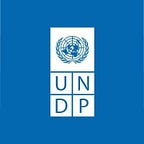Lay of the land: What does this year’s HDI tell us about Eurasia?
by Melissa Mina Kalyoncu
The concept of human development emphasizes that people and their capabilities, not economic growth alone, should be the criteria for assessing development. To that end, the Human Development Index (HDI) takes into account health, education and standard of living. This is its ultimate strength: the understanding that happiness is a multifaceted issue. Every year, the HDI ranks 189 countries, and its yearly updates give us the opportunity to weigh in on our progress.
In Europe and Central Asia, the region I currently support at UNDP, poverty has been eradicated but exclusion is widespread and inequalities are on the rise. The transition to greener growth and truly efficient and inclusive government are the region’s top priorities.
What does the big picture look like?
In spite of its difficult transition in the 1990s, the region saw an average HDI value increase of 15.6 percent between 1990 and 2017. All of the countries in the region are now in the high or medium development categories.
Cyprus, the highest-ranking country of the region, reclaimed its status as a thriving economy after showing remarkable resilience following the financial crisis of 2013. The country’s success can be attributed to it promoting itself as the business gateway between Europe, Asia, the Middle East and Africa, and leveraging its highly educated, English-speaking population.
Nearby in Turkey, we saw the biggest increase in HDI value over the years, with the country moving up eight places in five years. However, after experiencing a currency crisis, Turkey is forecasting a rise in unemployment which may result in a drop in its HDI in the coming years.
Tajikistan and Turkmenistan saw the least amount of increase in their HDI values, falling behind the region in overall development.
Where are people living the longest?
We see the longest life expectancy in Cyprus and Albania, with an average of 78.8 years. With 70 years, Kazakhstan has the lowest life expectancy of the region.
The life expectancy gap between Eastern and Western Europe has widened since the 1960s. Turkey has experienced large health gains and the Western Balkan countries have performed in line with global norms, while many other countries in the region lagged behind. Parity with Western Europe is still a distant goal.
But the starting point for improving health is addressing major risk factors in the general population, before individuals need medical care. Some risk factors of the region are tobacco and alcohol use, unsafe sex, poor hygiene and road safety. Both prevention and treatment must play a central role in the health agenda, specifically through wider implementation of cost-effective measures.
Where is the best place to get an education?
Belarus is the answer to that question, with 15.5 years of expected schooling; although, in mean years of schooling, its contender Georgia is ahead. Turkmenistan is at the bottom of the list, with 5 years less schooling.
The training of teachers is an important fact to consider here, which significantly affects the quality of education. In low and medium human development countries, 76 percent of teachers are trained. Kyrgyzstan is one of the four countries where fewer than 30 percent of teachers are trained. The availability of communication technologies is also significant, but modernizing schools requires substantial investments, a challenge in most developing regions.
Where do women face the most disadvantages?
The disadvantages facing women and girls are one of the greatest barriers to human development. Worldwide, the average HDI value for women is 5.9 percent lower than that for men. This is due to women’s lower income and educational attainment. In the region, the GNI per capita for women is nearly half of the GNI per capita for men.
While Eastern Europe and Central Asia has the lowest gender inequality among developing regions, the labour force participation rate for women is still much lower than for men (45.5 versus 70.3 percent), and women only hold 20.7 of the seats in parliament. Kyrgyzstan has an alarmingly high maternal mortality ratio and in Azerbaijan, adolescent births make up more than half of all births.
Where do we see the biggest inequalities?
Over the years, additional indices have been developed to identify groups falling behind. Their purpose is to monitor the distribution of poverty, inequality and gender empowerment. Greater inequality results in lower IHDI. The average loss due to inequality for developed countries is 10.7 percent; for Europe and Central Asia it is 11.7 percent.
In the region, we see the most inequality in Turkmenistan and Turkey, which is significant due to Turkey’s status as a rapidly developing country. It is important that the country develops in a manner where no one is left behind and the distribution of wealth is more even. Belarus has the least amount of inequality.
Check out the Human Development Index 2018 Statistical Update for a fuller picture of each country’s level of human development as well as further information and indicators.
Editor’s Note: If this piece stood out for you, clap and let us know.
